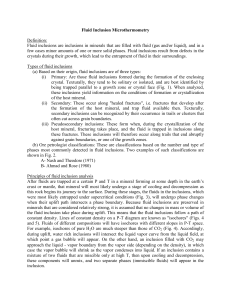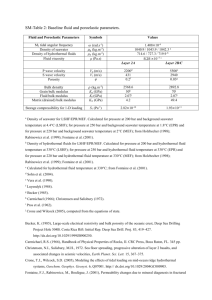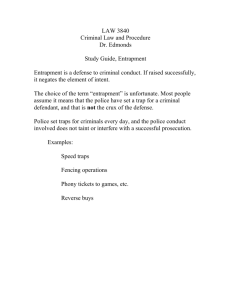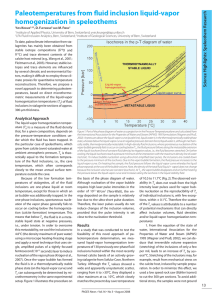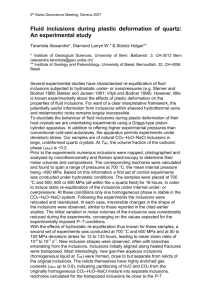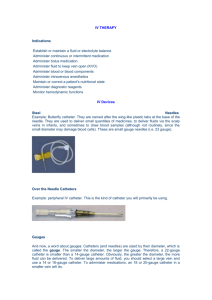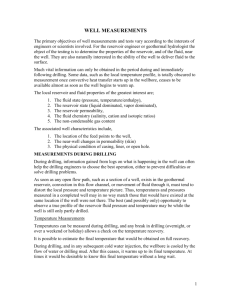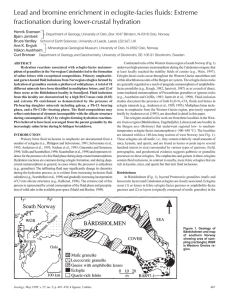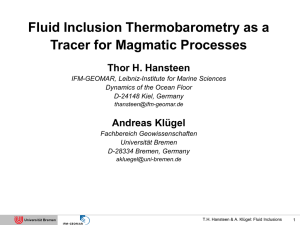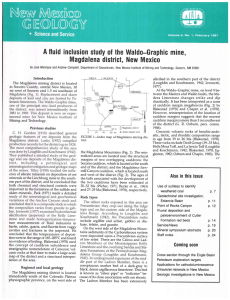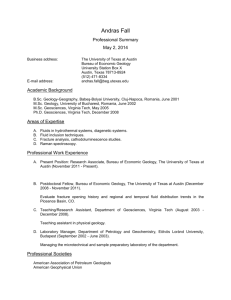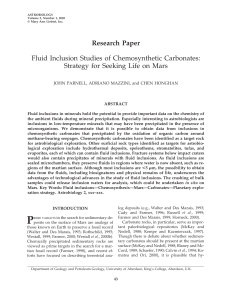AUGC Abstract Example
advertisement
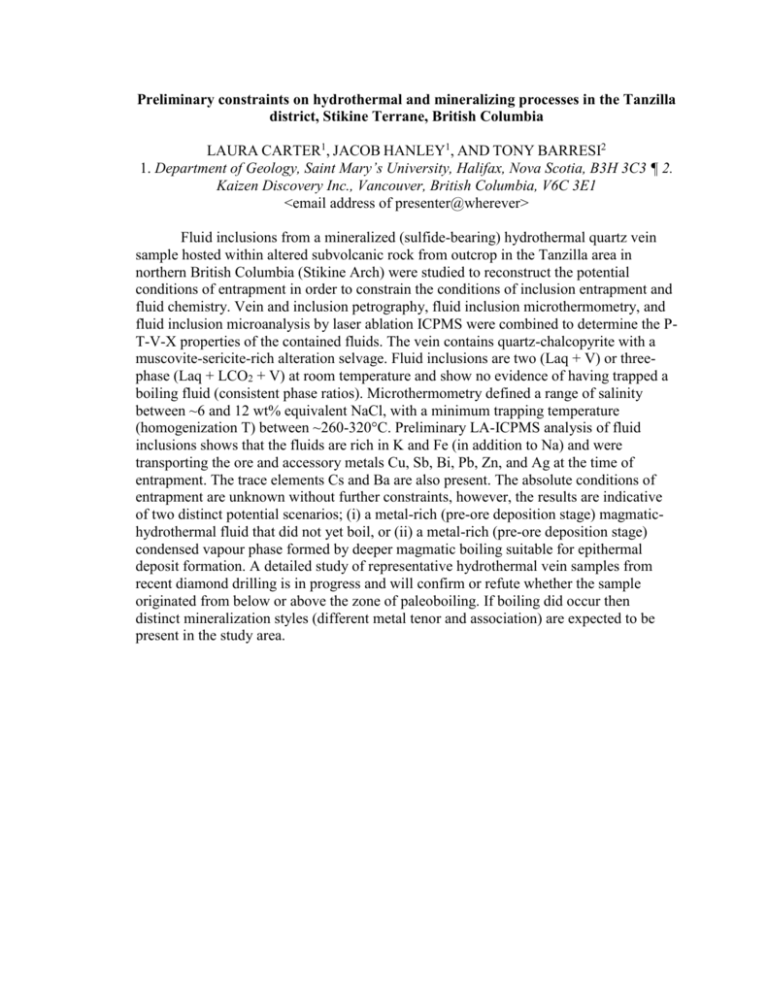
Preliminary constraints on hydrothermal and mineralizing processes in the Tanzilla district, Stikine Terrane, British Columbia LAURA CARTER1, JACOB HANLEY1, AND TONY BARRESI2 1. Department of Geology, Saint Mary’s University, Halifax, Nova Scotia, B3H 3C3 ¶ 2. Kaizen Discovery Inc., Vancouver, British Columbia, V6C 3E1 <email address of presenter@wherever> Fluid inclusions from a mineralized (sulfide-bearing) hydrothermal quartz vein sample hosted within altered subvolcanic rock from outcrop in the Tanzilla area in northern British Columbia (Stikine Arch) were studied to reconstruct the potential conditions of entrapment in order to constrain the conditions of inclusion entrapment and fluid chemistry. Vein and inclusion petrography, fluid inclusion microthermometry, and fluid inclusion microanalysis by laser ablation ICPMS were combined to determine the PT-V-X properties of the contained fluids. The vein contains quartz-chalcopyrite with a muscovite-sericite-rich alteration selvage. Fluid inclusions are two (Laq + V) or threephase (Laq + LCO2 + V) at room temperature and show no evidence of having trapped a boiling fluid (consistent phase ratios). Microthermometry defined a range of salinity between ~6 and 12 wt% equivalent NaCl, with a minimum trapping temperature (homogenization T) between ~260-320°C. Preliminary LA-ICPMS analysis of fluid inclusions shows that the fluids are rich in K and Fe (in addition to Na) and were transporting the ore and accessory metals Cu, Sb, Bi, Pb, Zn, and Ag at the time of entrapment. The trace elements Cs and Ba are also present. The absolute conditions of entrapment are unknown without further constraints, however, the results are indicative of two distinct potential scenarios; (i) a metal-rich (pre-ore deposition stage) magmatichydrothermal fluid that did not yet boil, or (ii) a metal-rich (pre-ore deposition stage) condensed vapour phase formed by deeper magmatic boiling suitable for epithermal deposit formation. A detailed study of representative hydrothermal vein samples from recent diamond drilling is in progress and will confirm or refute whether the sample originated from below or above the zone of paleoboiling. If boiling did occur then distinct mineralization styles (different metal tenor and association) are expected to be present in the study area.

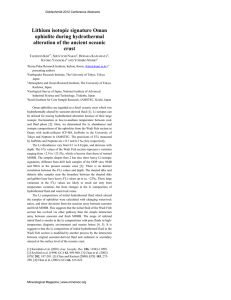



![Lymphatic problems in Noonan syndrome Q[...]](http://s3.studylib.net/store/data/006913457_1-60bd539d3597312e3d11abf0a582d069-300x300.png)


